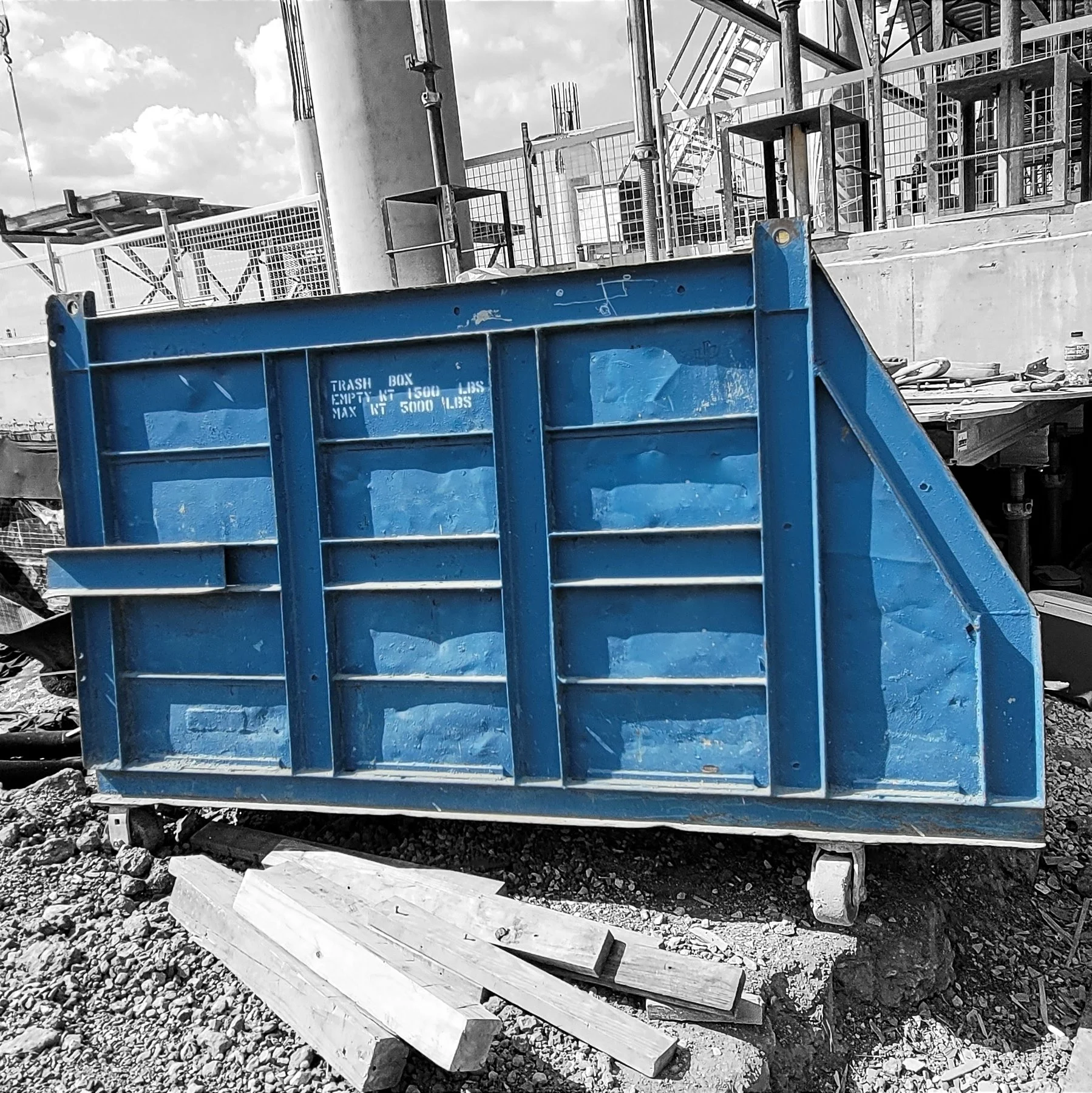Inspection Requirements of Below the Hook Crane Attachments
Crane Attachment Inspections
Below the Hook Lifting Devices have a set inspection criteria that many contractors in the US don’t keep up with. Discussing where and why that is can be helpful in driving the changes that should take place here. I hope this post can give people the tools and knowledge to address their risks and responsibilities in ensuring that we all have a have safe crane days.
Crane Trash Box fabricated presumably in-house
OSHA Requires Inspections Annually
Below the Hook Crane Attachments require an annual inspection. There are people reading this thinking “Whachu Talking About Willis?”. OSHA is less than explicit about this standard. OSHA 1926.251 governs crane attachments. It calls for “each shift” and “as necessary” inspections. This… this leaves the door open to not doing annual inspections at face value. But the real answer is found deeper in the responsibilities of ownership of equipment. It’s in the Letters of Interpretation.
OSHA Requires Inspection Standards to Meet ASME
The Letters of Interpretation is how OSHA helps guide employers in developing a safe workplace. The inspection criteria for items governed by OSHA 1926.251 are best answered in a 2004 Letter to Jeff Moser. He asks if he would be in compliance with OSHA if he followed ASME B30.20. Their Response:
Yes. Section 1926.251 does not address inspection criteria for below-the-hook lifting devices, except for slings used in conjunction with other material handling equipment.
Under the "General Duty Clause" (Section 5(a)(1)) of the Occupational Safety and Health Act, employers must:furnish to each of [its] employees employment... free from recognized hazards that are causing or are likely to cause death or serious physical harm...
The construction industry recognizes the necessity for inspections of below-the-hook lifting devices. An employer who follows ASME B.30.20, specifically sections 20-1.3.1 through 20-1.3.7 and 20-1.3.9 with respect to inspections for below-the-hook lifting devices (other than for slings), would be considered to be in compliance with OSHA requirements.
If you look at the ASME, The cited sections are the inspection criteria. It lays out the criteria for inspections and the requirements. There are a number of conditions in inspections.
OSHA 1926.251 (a)(4) requires a proof load test prior to use. This is an owners responsibility. It ties with ASME B30.20. Then when the item goes into service, there are three regular inspection intervals.
Every Lift (Rigger giving a safety check before the lift)
Frequent - designated person Monthly to daily depending on severity of service. No documentation required.
Periodic - Annually at the minimum. Qualified Person. Documented
To put this in perspective, if you are the rigger hooking this up and you don’t have a documented annual inspection and the lifter is more than a year old, you are the end party responsible for this inspection being completed just like crane operators are the final party to ensure this happens on cranes. Before it gets to these final parties, ASME also makes it clear that this is an Owner’s responsibility, and OSHA cites ASME. From the owner, to the Controlling Contractor on down to the Rigger, all parties are responsible for these annual inspections as a minimum standard.
Removal Criteria on Below the Hook Lifting Devices
The inspection criteria of the below the hook gear is not decidedly different from any other rigging inspection ;
Deformation or cracks
Heat Damage
Unauthorized repairs
etc…
I wish I could make a comprehensive list, but ASME is a copyright protected document. Please reach out to your employer if you need a full list. Most would have a copy they can share inside of their organization. Outside of paint, it should basically look like it did from the manufacturer. If you have an issue that you think would be fine, you should reach out to the manufacturer for acceptance of the issue.
Annual Inspections are Just Normal
Contractors largely understand that you need to have annual inspections of items like cranes and their 4 way rigging chains off of the crane hook. They often send in these in annually for a pull test. They often have 3rd party inspectors show up to load test the cranes and get a report. The gap in practices is in the Below the Hook Attachments. They simply have the same standards of the chains, cranes, scissor lifts, boom lifts, forklifts and so on. We don’t have endless use of equipment without qualified people taking a look at them. In the case of crane attachments, we are talking about items being lifted overhead either intentionally, or inadvertently. Many of them have a 15 to 20 year life span. Someone needs to look at them with some regularity over those years. OSHA has officially deferred to ASME for the determined duration in their Letter of Interpretation to Moser back in 2004. You don’t want to find yourself involved in an incident and explaining why you thought 15 year old lifters didn’t need to have someone look at them. You owe it to your co workers and your employer to cover everyone’s risk exposure. You do this by following industry standards like ASME B30.20.
Further Support with Below the Hook Inspections
If you need any further help or support in this discussion, I can be found at gaytor@cranegear.net It doesn’t matter if you are a client or just interested in furthering safety. This is something I personally care about and would look forward to assisting with.


